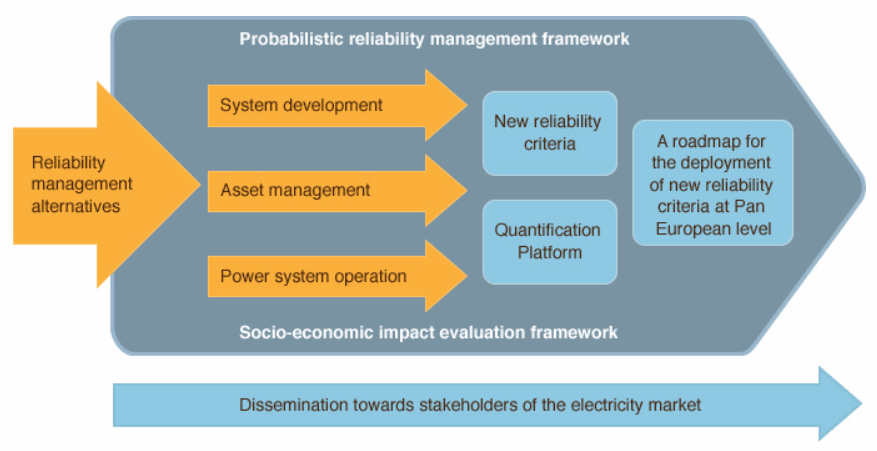
GARPUR
Project overview
Power system reliability management means to take decisions under increasing uncertainty (for instance, related to renewable generation). It aims at maintaining power system performance at a desired level, while minimising the socio-economic costs of keeping the power system at that performance level.
Seven TSOs (Belgium, Bulgaria, Czech Republic, Denmark, France, Iceland, Norway), together with twelve RTD performers and one innovation management expert work with the 4-year GARPUR research project in order to design, develop, assess and evaluate new system reliability criteria and management to be progressively implemented over the next decades at a pan-European level, while maximising social welfare.
The new management methodologies encompass the three key activities at different time scales (power system operation, asset management, system development) that, in turn, ensure coherent decision-making at these respective time horizons.
These methodologies include also mathematical and computational models to predict the location, duration and amount of power supply interruptions.
Five alternatives to improve reliability management of the pan-European power system are to be studied:
A1. model the spatial-temporal variation of the probabilities of exogenous threats and take into account the actual criticalities of service interruptions in the reliability management,A2. take into account the increased possibilities of corrective control and its probability of failure in the reliability management,A3. exploit the flexibility provided by demand-side management and energy storage, to achieve the reliability enhancement given the emergence of decentralised renewable generation,A4. explicitly model the impact of system development and asset management decisions on the reliability management during operation,A5. explicitly take into account the consideration of low-probability high-impact events, such as the ones originating from extreme weather conditions, possibly through climate change, or those originating from adverse behaviours of external entities.
After practical validation by the TSOs, these alternatives are to be analysed with the help of a Quantification Platform.
Pilot tests of the new proposed reliability criteria are to be performed by TSOs, using this quantification platform. First, a pilot test is to be performed on a pan-European level, using a coarse grained model of the European interconnection. Second, pilot tests are to be carried out by one or two TSOs as close as possible to a real life context and are to be related to operational planning or/and a realistic investment planning problem; these tests are planned to use real system and cost data for investment planning purposes and real measurements and data for operational planning purposes.
Reliability criteria are compared and presented to the TSO community and Regulatory Authorities who will give feed-back on the robustness of the results through dedicated workshops.
Dissemination activities of the new reliability criteria are supported by a Reference Group of TSOs and address all the key electricity market stakeholders. An implementation roadmap is to be delivered for the deployment of the resulting technical and regulatory solutions to keep the pan-European system reliability at optimal socio-economic levels.
The expected outcomes of GARPUR are graphically illustrated below:
